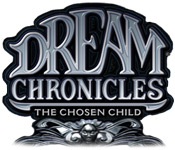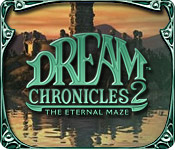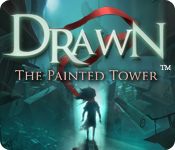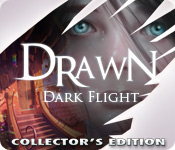This is my last foray into the Dream Chronicles series for now - the third installment in the Faye's Journey trilogy, The Chosen Child. This game, like its predecessors, was met with positive reviews and awards when it was released in 2009. It is another evocative, dreamy puzzle/adventure game with stunning visuals, absorbing puzzles and peaceful music that makes for a relaxing, fun gaming experience.
The game story continues on from where The Eternal Maze left off, but we begin with Faye waking up with no memory of who she is and thinking she is someone named Brenna who lives in a treehouse. However, she has recurring dreams of having a husband and a daughter who is lost. Eventually she regains her memory, and continues her journey through the Fairy Realm to rescue her daughter and reunite her family.
The Chosen Child does not so much improve graphics-wise from the standard of the first two games - the graphics and animation are rather similar, which initially disappointed me as I was expecting improvement there. Still, for the era and for the casual gaming market, they are beautiful visuals. There are some marked improvements in the mechanics of the game - the journal is improved, the Dream Jewel system is (again) improved. But the area where this game really does improve on the previous installments, is in the gameplay. Strikingly non-linear compared to the last two games (though The Eternal Maze was less linear than the first game), the really interesting mechanic used in The Chosen Child is the "Nexus", a mechanical room with unlockable doors leading to different areas. Using the Nexus the player can (and must) travel back and forth between locations, which means you are better able to fully explore and appreciate all the areas in the game. It gave this game a far more Myst-like feel. You must collect various objects from one location and use them in another - and in a more involved way than in The Eternal Maze, which mostly involved simply piecing things back together. In The Chosen Child, you must follow involved potion recipes, perform a number of different steps to forge Dream Jewels (players actually create them for the first time in this game) and solve puzzles within puzzles. This definitely makes for a much more interesting game.
Again, however, some of the hidden objects are frustratingly hard to find. Personally I found this disrupted the flow of my game, as after I had spent some time figuring out how to solve a puzzle (the difficult part) I spent a much longer time searching for one blurry tiny object that I needed to complete said puzzle. Another annoying thing is the game's poor hint system. The hint system was similarly non-existent in the first two games, which was excusable because those games were easier and didn't really need them. In this far more non-linear game, I think a better hint system was needed. The "sparkles" showing locations of hidden objects have been removed entirely, and the guidance by Fidget through the crystal ball you are given at the start of the game is almost completely useless. Dream Pieces are a little easier to find - they are still small and white, but slightly bigger than in The Eternal Maze. A new collection object is introduced in this game - gold pieces, which contribute to your score at the end.
I really liked the system used for unlocking the various gates inside the Nexus. Dream Jewels are used for this, and each lock uses a combination of dream jewels in an interesting colour puzzle. The puzzles in the game are improved from the last games - they are a little bit repetitive (there are a fair few musical/rhythm puzzles) but a lot more fun, in my opinion. Following the recipe book to mix involved potions and searching through a telescope for various constellations (a step in creating Dream Jewels) were a couple of my favourites. I think the multiple steps in these rather involved puzzles was what made these the most fun for me.
I liked the twist at the end of the story (I won't give it away) and overall this has been an absorbing and relaxing gaming experience. I highly recommend the Dream Chronicles series to anyone who is into the puzzle/adventure genre. The story, visuals, music and puzzles are all stunning. On top of that, playing these games in procession, it's been really interesting watching how the developers progressed with the series, seeing the things they improved on. I really liked seeing how problems I had with previous games were resolved in the subsequent games. Anyway - if you're interested in trying this game out for yourself, click the link below - and if you missed them, see my previous two posts for reviews of the first and second games in this beautiful series.


































